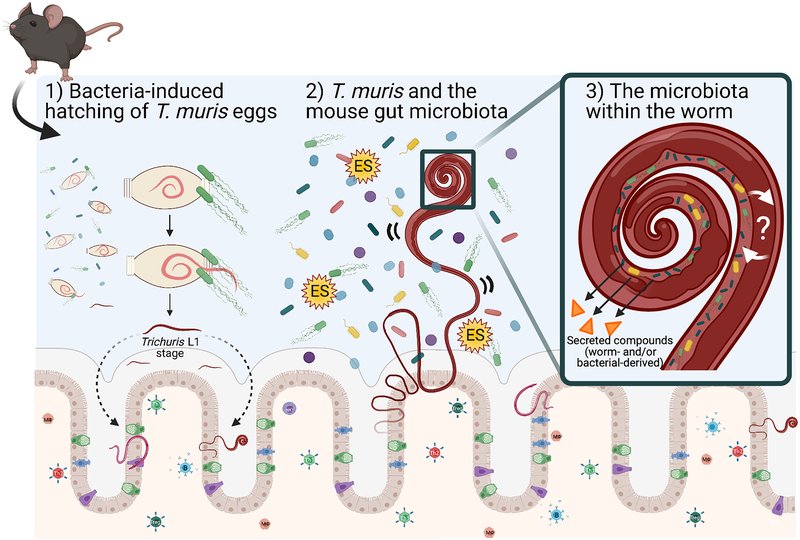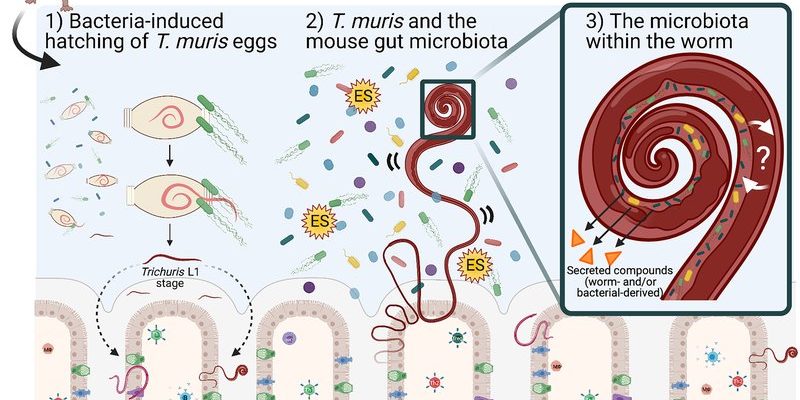
So how does this little worm manage to feed itself? Let’s break it down step by step, just like sitting down with a cup of coffee and chatting about a quirky topic. Understanding the feeding mechanism of whipworms not only sheds light on their biology, but it also highlights the importance of sanitation and health in preventing infections.
Understanding the Whipworm’s Anatomy
To grasp how whipworms feed, we need to start with their anatomy. These parasites have a unique shape that resembles a whip, hence their name. The whipworm’s body is long and slender, with a thin anterior end that burrows into the intestinal wall of its host. Picture a tiny straw—this is essentially how they reach their food source.
The whipworm has both male and female forms, and they’re quite different. Male whipworms are shorter and have a curled tail, while females are longer and straight. Once they settle into the intestinal lining, they start to embed themselves. This is crucial because it allows them to access the host’s nutrients directly.
But what’s even more interesting is how they manage to stay anchored. Their body has a series of grooves and hooks that help them attach securely to the intestinal walls. So, while they feast on their host’s nutrients, they’re not just floating around—they’re firmly planted in place, making it difficult for the body to flush them out.
How Whipworms Feed: The Process Explained
Now, let’s delve into the actual feeding process. Whipworms feed by consuming the nutrients present in the intestinal contents of their host. Imagine having a mini vacuum cleaner that sucks up all the good stuff while leaving the bad behind—that’s pretty much how whipworms operate.
1. Attachment: As whipworms burrow into the intestinal wall, they create small wounds. This not only keeps them anchored but also allows them to access the blood and tissue fluids of the host.
2. Absorption: The whipworm’s body is equipped with specialized cells that can absorb nutrients directly from the host’s intestinal fluids. They thrive on simple sugars and other organic materials that are available in the host’s gut. It’s like they’ve set up a buffet right at the source.
3. Waste Management: While they feast, whipworms also produce waste. However, because they’re located inside the intestine, this waste doesn’t leave the host’s body until the host does. Over time, this can lead to a buildup of toxins and other substances that can be harmful.
This feeding method is quite efficient for the whipworm, but it doesn’t do much for the host. As the whipworms absorb nutrients, the host might start feeling fatigued, have digestive issues, or even experience anemia due to a lack of essential nutrients.
The Impact of Whipworm Feeding on Hosts
You might be wondering, “So what’s the big deal about whipworms?” Well, their feeding mechanism can have serious consequences for their hosts. Over time, heavy infestations of whipworms can lead to significant health issues.
1. Nutritional Deficiencies: Because whipworms consume nutrients, they can cause deficiencies in their hosts. This can impact overall health and well-being, especially in children or individuals with compromised immune systems. Just think about it—a growing child needs a lot of nutrients to thrive, and whipworms can siphon off what they desperately need.
2. Gastrointestinal Issues: The attachment of whipworms to the intestinal wall can cause irritation. This might lead to symptoms like diarrhea, abdominal pain, or even more severe gastrointestinal issues. It’s like having a nagging headache that won’t go away—really annoying and distracting.
3. Increased Infection Risk: With the body’s resources being depleted and the intestinal lining damaged, there’s a higher risk of secondary infections. The host’s immune system is weakened, making it easier for other pathogens to take hold. It’s a bit of a domino effect that can spiral into more serious health concerns.
How Whipworms Are Transmitted
Understanding how whipworms work also brings us to how they’re transmitted. Whipworms have a life cycle that primarily involves contaminated soil. Here’s how it goes:
1. Egg Production: Female whipworms lay their eggs inside the host’s intestine. These eggs are then excreted with the host’s feces into the environment.
2. Contaminated Soil: The eggs can survive in soil for several months. If someone comes into contact with contaminated soil—say, through dirty hands or contaminated food—they can unwittingly ingest the eggs.
3. Infection: Once the eggs reach the gut of a new host, they hatch and the larvae move to the intestines, where they mature and begin feeding on the host’s nutrients.
This is why sanitation is so crucial in preventing whipworm infections. Proper hygiene, such as washing hands and ensuring clean water supplies, can dramatically reduce the risk of transmission.
Preventive Measures Against Whipworm Infections
To keep whipworms at bay, some simple preventive measures can be effective. Here are a few tips:
- Good Hygiene Practices: Regular handwashing, especially after using the bathroom or before eating, is key.
- Safe Food Practices: Wash fruits and vegetables thoroughly, especially if they’re grown in areas with poor sanitation.
- Clean Water: Drinking clean and treated water can reduce exposure to whipworm eggs.
- Health Education: Communities need awareness programs around sanitation practices to reduce infections.
Prevention is often easier than treatment! Keeping good hygiene can help thwart these pesky parasites from making a home inside your intestines.
In summary, the feeding mechanism of whipworms is a fascinating yet sobering topic. Their ability to latch onto the host’s intestinal walls and absorb vital nutrients not only impacts the hosts’ health but highlights the importance of sanitation and hygiene practices. By understanding how whipworms feed and how they’re transmitted, we can take steps to prevent these parasites from affecting us.
Keeping ourselves informed and educating others can help create healthier communities and reduce the incidence of whipworm infections. So, the next time you’re washing your hands or preparing food, remember—you’re taking important steps not just for yourself, but for everyone around you. Stay healthy!

